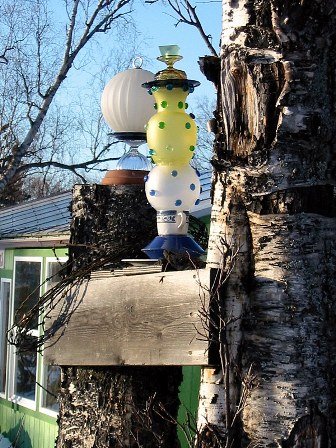
DD One -
If you think of ground covers as carpets for the floor of your garden, you may begin to look at them in a different light. Just like floor coverings in our own homes, each area of the garden has a different use – so choose each ground cover carefully.
For those areas of the garden that are dark, shady, boring and hard to grow in, try one of the many lamiums. These hardy perennials come in an assortment of leaf color from white/green variegated to lime green. They are often used as an annual in hanging pots or containers because of their ability to droop over an edge. These plants are dreadfully under-used as ground covers. I have a fabulous patch of Lamium maculatum in my garden that is all shades of variegated from white to dark green to maroonish/purple, and that’s just the leaf color! The patch collectively blooms pink to purple to white! I didn’t even plant this lovely colony, but it made its way there and settled in, for which I am eternally grateful. It lights up the shady side of the path and looks too fabulous in the fall with golden birch leaves sprinkled on top (see photo above). This is not a ground cover to be walked on and never wants to dry out, but it makes up for these shortcomings in beauty and steadfastness.
If you want aroma, reliability, usefulness, mow-ability and beauty, all rolled up in one, Mentha arrensis (Wild Montana Mint), is hard to beat. Yes, it does provide all these things, and makes a great mint slushy as well! People’s eye brows go sky-high when I recommend it, but it really is a great plant. It’s not as invasive as most members of its family (at least not up here in the North Land) and it tastes SOOO good! It grows up to 12 inches in the sun, and a bit taller in the shade (it can grow in both). It grows without much water, or in moist soil. It doesn’t particularly care what type of soil it is given, responding to conditions by adjusting its size. Tea made from this wonderful little plant tastes like it’s had honey added to it – there is no bitter taste and it can hardly be made too strong. Mentha arrensis can even be kept short by mowing!
Recipe for Mint Slushy
1 large handful of Wild MInt (Mentha arrensis)
2 cups cold water
1/4 cup raw sugar dissolved in 1 cup warm water
2 cups ice cubes
Mix all ingrediants into a blender at high speed until it is the consistancy of a smoothy. Serve with a sprig of mint on top - preferably in a small glasss shaped like a flower pot!
A combination of slow growing ground covers can serve an all together difference purpose and provide a different look. For example: try combining Moss Campion (Silene acaulis) with its glossy green mat and bright pink flowers with the fuzy gray/green carpet and soft purple blooms of Wooly Thyme (Thymus pseudolanuginosus). These two plants have a similar growth rate, share a love of sun and good drainage and form mats at ground level. Twining together over rough terrain, they are indeed a handsome coupling. They are perfect to plant along a rock pathway, on stone steps or on a rocky hillside. Throw in some Veronica prostrate ‘Aztec Gold’ with its golden/lime foliage and you’ll think you’ve died and gone to horticultural heaven. Really, you will! The wonderful blue blossoms on the Veronica are just a ‘way-too-fun’ extra!
The best thing about a reliable ground cover is that it’s reliable! You never have to worry about that part of the garden again! If chosen carefully, to suit your needs, a ground cover should do just what its name indicates – cover the ground! It should also look beautiful, make you smile and perhaps, with luck, you can make a pot of tea from it as well.

















